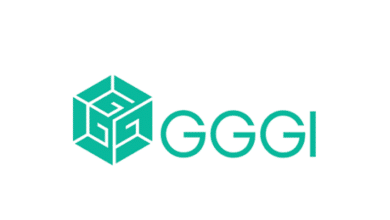All You Need to Know About Cold Emailing: Tips and Strategies
All You Need to Know About Cold Emailing: Tips and Strategies

All You Need to Know About Cold Emailing: Tips and Strategies
In today’s digital age, email has become an essential tool for communication. And when it comes to business, cold emailing has emerged as a powerful technique for reaching out to potential clients, partners, or employers.
But what exactly is cold emailing? How can you craft an effective cold email that actually gets a response? In this comprehensive guide, we will delve into the world of cold emailing, providing you with valuable insights, tips, and strategies to help you master this art and achieve your desired outcomes. Also read HOW TO WIN A FULLY FUNDED SCHOLARSHIP (Master’s and PhD) BY COLD EMAIL – 7 tips.
What is Cold Emailing?
Cold emailing is the process of sending an unsolicited email to someone you have no prior relationship with. Unlike warm emails, which are sent to people you have some connection or interaction with, cold emails are a way to introduce yourself, pitch your ideas, or establish a professional relationship with individuals who are unfamiliar with you or your business.
Why is Cold Emailing Important?
Cold emailing can be a highly effective way to expand your network, generate leads, secure partnerships, or even land your dream job. It allows you to proactively reach out to individuals who may be interested in what you have to offer, without relying on chance encounters or referrals.
If done right, cold emailing can open doors to new opportunities and help you achieve your goals. We have covered some interesting tactics on cold emailing on this article: HOW TO WIN A FULLY FUNDED SCHOLARSHIP (Master’s and PhD) BY COLD EMAIL – 7 tips. Check it.
7 Tips on Crafting an Effective Cold Email
Research the Recipient: Before you hit send, take the time to research your recipient. Find out who they are, what they do, and what their interests or pain points might be. This will help you tailor your email to their specific needs or preferences, increasing the chances of a positive response.
Unlocking Your Path to a High-Paying Job: Escaping the Clutches of Job Poverty
Craft a Compelling Subject Line: The subject line is the first thing your recipient sees, so make it count. Grab their attention with a concise, intriguing, and personalized subject line that entices them to open your email.
Personalize Your Email: Generic, impersonal emails are easy to spot and often end up in the trash folder. To increase your chances of success, personalize your email by mentioning something specific about the recipient or their work. Show that you’ve done your homework and genuinely care about establishing a connection.
Keep it Short and Concise: Busy professionals receive countless emails every day, so it’s crucial to keep your email short, concise, and to the point. Clearly state your purpose and value proposition, and avoid rambling or using unnecessary jargon.
Highlight the Benefits: Clearly communicate the benefits or value you can provide to the recipient. Whether it’s a solution to their problem, a unique opportunity, or a mutually beneficial partnership, emphasize what’s in it for them.
Include a Call to Action: Don’t leave your recipient hanging. Be clear about what you want them to do next. Whether it’s scheduling a meeting, providing feedback, or initiating a conversation, include a clear call to action that encourages them to take the next step.
Follow Up: If you don’t receive a response to your initial email, don’t be discouraged. Follow up politely and professionally, giving your recipient a gentle nudge and reminding them of your previous email. Persistence can often pay off.
5 Best Practices for Cold Emailing
Build a Targeted List: Instead of casting a wide net, focus on building a targeted list of individuals or companies that align with your goals or interests. Quality over quantity is key when it comes to cold emailing.
Segment Your Audience: Different recipients may require different approaches or messages. Segment your audience based on their characteristics, needs, or preferences, and tailor your emails accordingly.
Test and Optimize: Cold emailing is an iterative process. Test different subject lines, email structures, and call-to-action strategies to see what works best for your specific audience. Continuously optimize your approach based on the feedback and results you receive.
Personalize at Scale: Personalization doesn’t have to be time-consuming. Use automation tools or email marketing software to personalize your emails at scale. Merge tags, dynamic content, and personalized templates can help you save time while still delivering a personalized touch.
Track and Analyze: Use email tracking software to monitor the performance of your cold emails. Track open rates, click-through rates, and response rates to gain insights into what’s working and what’s not. Analyze the data to refine your strategy and improve your results.
Frequently Asked Questions(FAQs) on Cold Emailing as a Job Seeking Strategy
Cold emailing is an effective job seeking strategy that involves reaching out to potential employers or professionals in your field through email, even if they haven’t advertised any job openings. It can be a powerful tool for getting your foot in the door and securing high-paying job opportunities. To help you understand more about cold emailing and its benefits, here are some frequently asked questions and their answers:
1. What is cold emailing? Cold emailing is the practice of sending unsolicited emails to individuals or companies with whom you have no prior relationship in order to introduce yourself, express your interest, and inquire about potential job opportunities.
How to get an NGO Job in United States
2. Why is cold emailing effective? Cold emailing can be effective because it allows you to proactively reach out to decision-makers and hiring managers who may not have advertised job openings. It gives you the opportunity to showcase your skills, experience, and enthusiasm, potentially leading to job interviews and offers.
3. How should I personalize my cold emails? Personalization is key when it comes to cold emailing. Research the recipient’s background, company, and recent accomplishments to tailor your email specifically to them. Mention specific reasons why you’re interested in their organization and how your skills align with their needs.
4. Should I use a template for cold emails? While using a template can save time, it’s important to customize each email to make it more personal and relevant. Templates can be a good starting point, but make sure to modify them for each recipient and add a personal touch to increase your chances of success.
5. How can I automate my cold email outreach? There are several tools available that can help automate your cold email outreach, such as email marketing platforms or customer relationship management (CRM) software. These tools allow you to schedule emails, track responses, and manage your contacts more efficiently.
6. How should I follow up after sending a cold email? Following up is crucial in cold emailing. Send a polite and concise follow-up email about a week after your initial email if you haven’t received a response. Express your continued interest and ask if they have had a chance to review your email.
7. How can I track the success of my cold email campaign? To track the success of your cold email campaign, use email tracking tools that can provide insights into open rates, click-through rates, and response rates. This data will help you analyze the effectiveness of your emails and make necessary adjustments for better results.
8. Is cold emailing the only job-seeking strategy I should use? Cold emailing is just one of many job-seeking strategies. It’s important to diversify your approach by also utilizing networking, online job boards, social media, and attending industry events. A combination of strategies will increase your chances of finding high-paying job opportunities.
9. How long should my cold email be? Keep your cold email concise and to the point. Aim for no more than 3-4 paragraphs, highlighting your relevant skills, experience, and why you are interested in the company or individual you’re reaching out to. Busy professionals appreciate brevity and will be more likely to read and respond to shorter emails.
10. How many cold emails should I send? The number of cold emails you send will depend on your goals and available time. It’s important to strike a balance between quantity and quality. Focus on sending personalized and well-crafted emails to a targeted list of individuals or companies rather than sending a large number of generic emails.
Cold emailing can be an effective strategy for job seekers who are proactive, persistent, and willing to put in the effort to personalize their emails and follow up. By leveraging this strategy alongside other job-seeking methods, you can increase your chances of securing high-paying job opportunities and advancing your career.
Conclusion
Cold emailing can be a powerful tool in your arsenal when it comes to expanding your network, generating leads, or securing new opportunities. By following the tips and strategies outlined in this guide, you can improve your cold emailing skills and increase your chances of success. Remember, like any skill, mastering cold emailing takes practice and persistence. So, start crafting those compelling emails and watch as new doors open for you. Happy cold emailing!
FOLLOW SANGO JOBS ON SOCIAL MEDIA CHANNELS BELOW
LINKEDIN, WHATSAPP, TELEGRAM and FACEBOOK
CHECK: HOW TO EFFECTIVELY SEARCH FOR JOBS ON LINKEDIN
Frequently Asked Questions(FAQs) on Cold Emailing as a Strategy for Finding a Scholarship




